Dictionaries were once thought of only as a printed reference work. However, from around 1990, English dictionaries for learners became available on portable electronic devices, CD/DVD-ROMs, and the internet. These days, dictionary apps are easily accessible on smartphones. In this article, I will explore the impact of digitalization on how information is presented in dictionaries.
Let’s compare the entries for the word acknowledge in the paper and online versions of the Oxford Advanced Learner’s Dictionary 10th Edition (OALD10). Whereas the online version has a very clear layout, the print publication employs numerous symbols and abbreviations to maximize the limited space and enrich the content. Digitalization has granted designers greater space in which to present information in an easy-to-read format. Unlike the printed edition, the online version has line breaks for phonetic symbols, shortcuts, definitions, and individual examples. This creates more white space making it easier on the eyes.
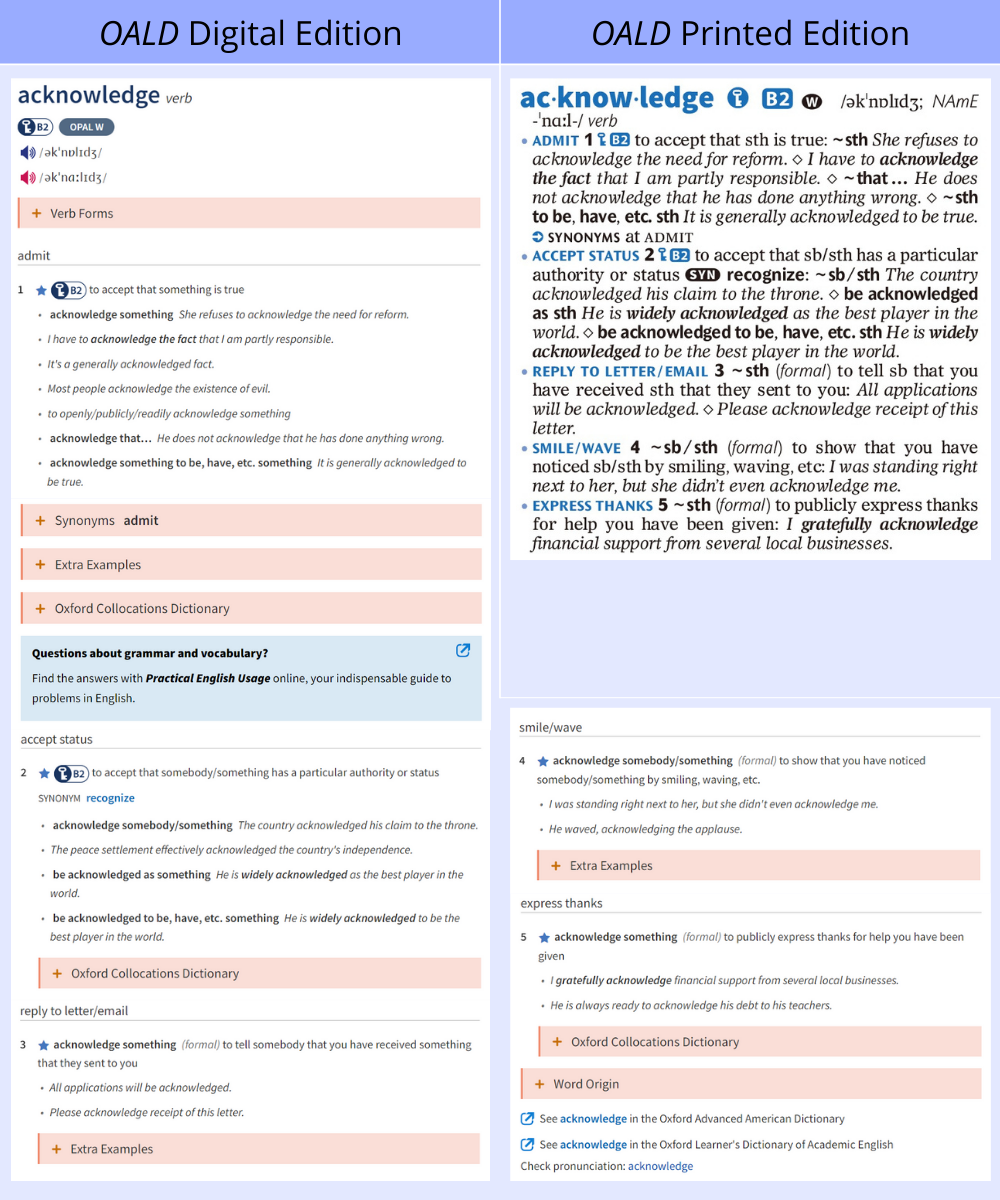
Furthermore, you will notice from the example below that some information is found only in the online dictionary. Here, users can click the plus sign to expand the text.
+ Verb Forms
+ Synonyms admit
+ Extra Examples
+ Oxford Collocations Dictionary
+ Word Origin
Let’s take a closer look at the entry for acknowledge from the beginning. Online, users can click ![]() to view other items from the Oxford 3000 wordlist which are at B2 CEFR level in alphabetical order. When using the
to view other items from the Oxford 3000 wordlist which are at B2 CEFR level in alphabetical order. When using the ![]() function, a pull-down menu with Oxford 3000, Oxford 5000, and Oxford 5000 excluding Oxford 3000 appears, and words from levels A1 to C1 (multiple levels can be selected) can be displayed. Users can also
function, a pull-down menu with Oxford 3000, Oxford 5000, and Oxford 5000 excluding Oxford 3000 appears, and words from levels A1 to C1 (multiple levels can be selected) can be displayed. Users can also ![]() the following PDF lists:
the following PDF lists:
The Oxford 3000
The Oxford 3000 by CEFR level
The Oxford 5000
The Oxford 5000 by CEFR level
American Oxford 3000
American Oxford 3000 by CEFR level
American Oxford 5000
American Oxford 5000 by CEFR level
Clicking on a word on the screen list will open that word’s entry. Users can hear the English or American pronunciation of that word by clicking on the blue ![]() or red
or red ![]() speaker icon. They can also search the displayed list by typing a word in the search box.
speaker icon. They can also search the displayed list by typing a word in the search box.
By clicking ![]() , users can view items from sublist 10 of the written words list in the Oxford Phrasal Academic Lexicon (OPAL). OPAL is a newly developed corpus-based list of important words in academic English from Oxford University Press. It consists of four lists: written words, spoken words, written phrases, and spoken phrases. The written words list has 1200 keywords in 12 sublists of 100 words each, and the spoken words list has 600 keywords in six sublists of 100 words each. Sublist 1 in each category contains the most important terms, followed by the most important terms in descending order. The list of phrases is organized by function. The written phrases list contains approximately 370 phrases in 15 functional sublists, and the spoken phrases list contains approximately 250 phrases in 16 functional sublists.
, users can view items from sublist 10 of the written words list in the Oxford Phrasal Academic Lexicon (OPAL). OPAL is a newly developed corpus-based list of important words in academic English from Oxford University Press. It consists of four lists: written words, spoken words, written phrases, and spoken phrases. The written words list has 1200 keywords in 12 sublists of 100 words each, and the spoken words list has 600 keywords in six sublists of 100 words each. Sublist 1 in each category contains the most important terms, followed by the most important terms in descending order. The list of phrases is organized by function. The written phrases list contains approximately 370 phrases in 15 functional sublists, and the spoken phrases list contains approximately 250 phrases in 16 functional sublists.
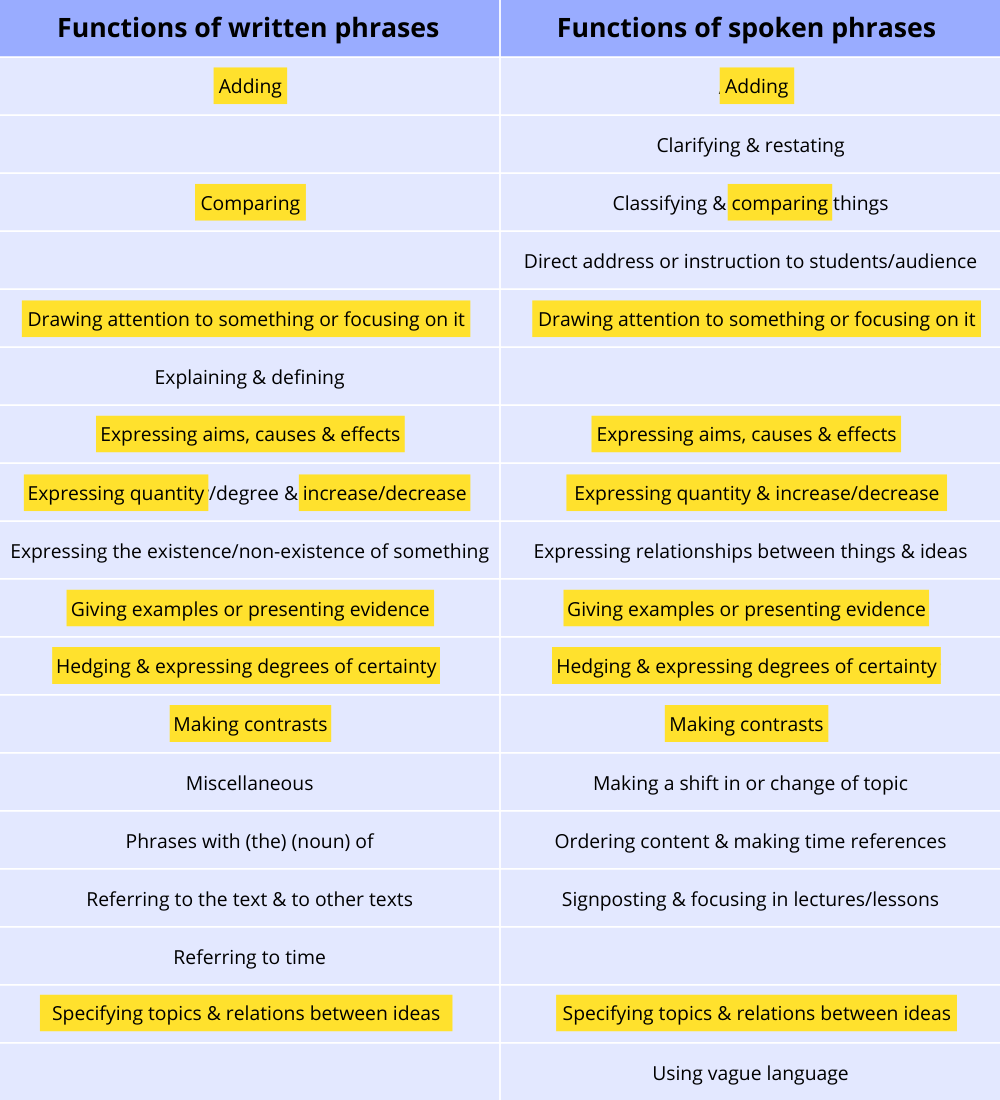
*Features common to written and spoken phrases are highlighted.
Clicking![]() will reveal the following pull-down menu, allowing users to filter by list (words by importance, and phrases by function) to display relevant words and phrases:
will reveal the following pull-down menu, allowing users to filter by list (words by importance, and phrases by function) to display relevant words and phrases:
Dictionary: Academic English/English
Word List: OPAL written phrases/ OPAL spoken words/OPAL written words/OPAL spoken phrases
The following PDF lists of key words in Academic English organized by sublists can be downloaded:
OPAL: written single words
OPAL: spoken single words
OPAL: written phrases
OPAL: spoken phrases
Let’s return to the main page for acknowledge. By clicking the blue and red speaker icons in front of the phonetic symbols, users can hear the English and American pronunciations. Also, as you can see from the pictures below, the print version uses symbols and abbreviations in bold type to show the example structures (~ represents acknowledge, sth is short for ‘something’, and sb for ‘somebody’), whereas they are fully written out in the digital version. In addition, sense 1 of the online version contains three examples not included in the print publication.
By looking at the entries for acknowledge, we can see that the online version is easy to read and contains a large amount of information. Additional information is organized into different sections in order not to sacrifice readability. In the print age, when space was precious, every effort was made to make maximum use of a limited space.
The OALD is currently available in print, online (for free), premium online, and the app (Google Play / App Store). The access code for the app and the premium online can be purchased with the print dictionary, and also the premium online access code can be purchased separately. OALD now goes beyond the traditional framework of a “dictionary” and provides guidelines for vocabulary learning, as well as comprehensive support resources for learning and teaching English. It also provides information, functions, tools, and materials that are useful not only for searching, but also for learning and teaching. I have listed the most important of these tools and where to find them under the following headings:
General information
Columns
Search
Appendices
How to use the dictionary
Others
I hope that the information in this article will help you to get the most out of the wonderful resources available with the OALD.
Reference:
Takahashi, Rumi, et al. 2021. “An Analysis of Oxford Advanced Learner’s Dictionary of Current English, Tenth Edition.” Lexicon. No. 51. Iwasaki Linguistic Circle. 1-106.
Usage guide?? = available, (?) = partially available, X = unavailable, N.A. = not applicable. Locations are indicated below the symbols where appropriate.
(NEW = introduced with OALD10 (2020).
General information
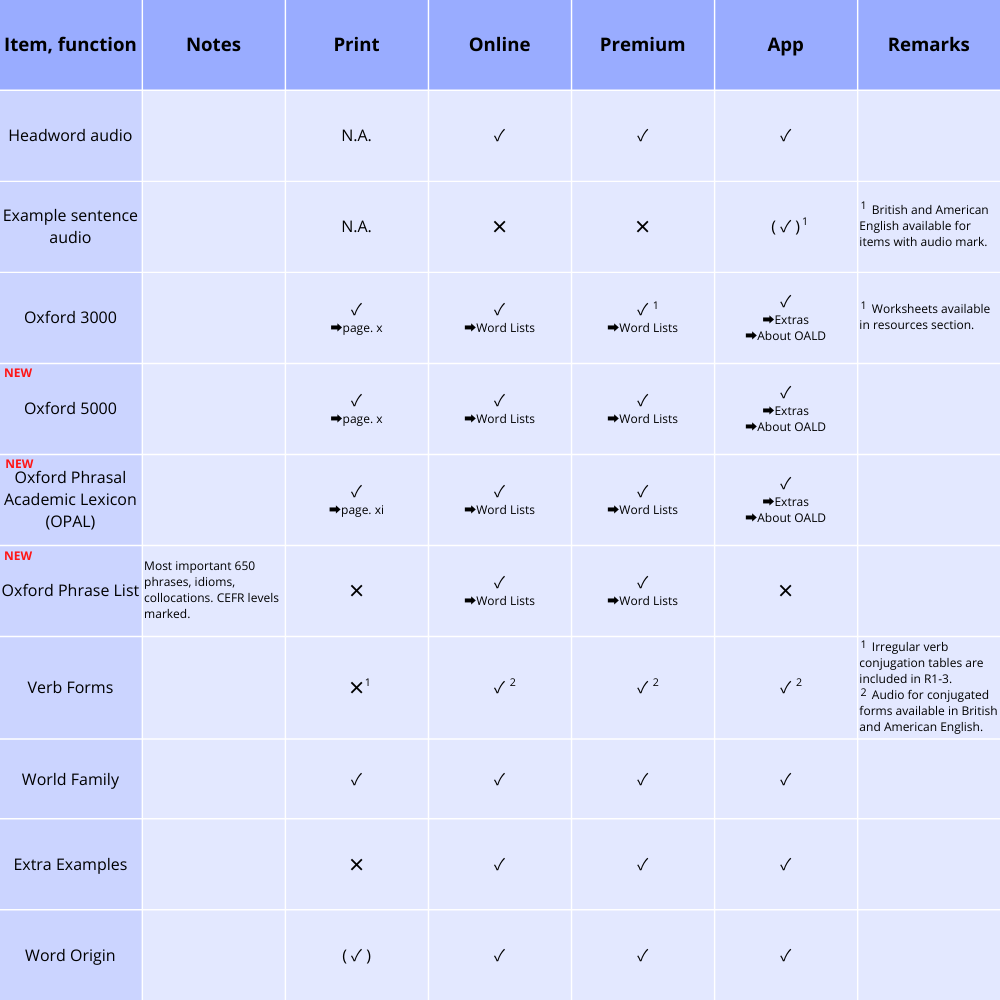
Columns
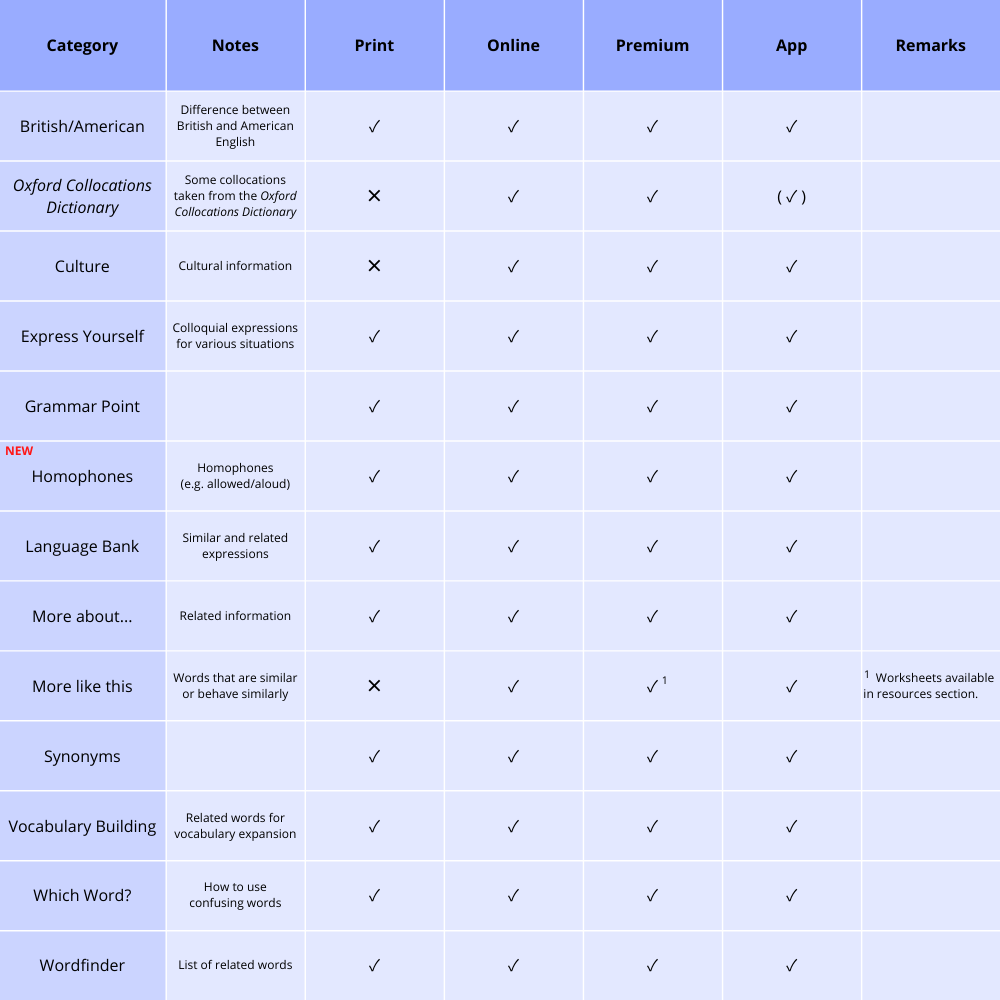
Search
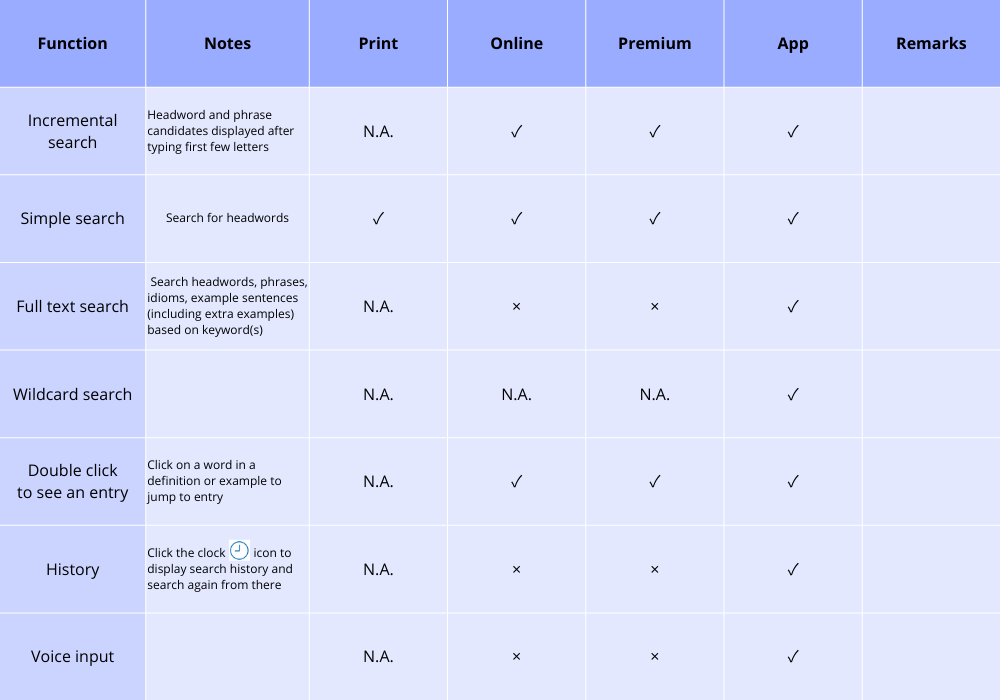
Appendices
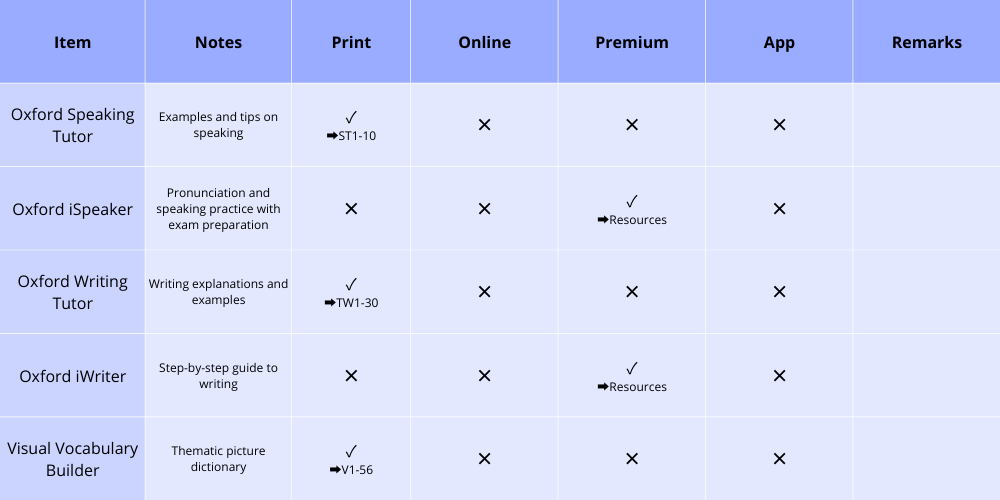
References (reference pages on the OALD Premium online)
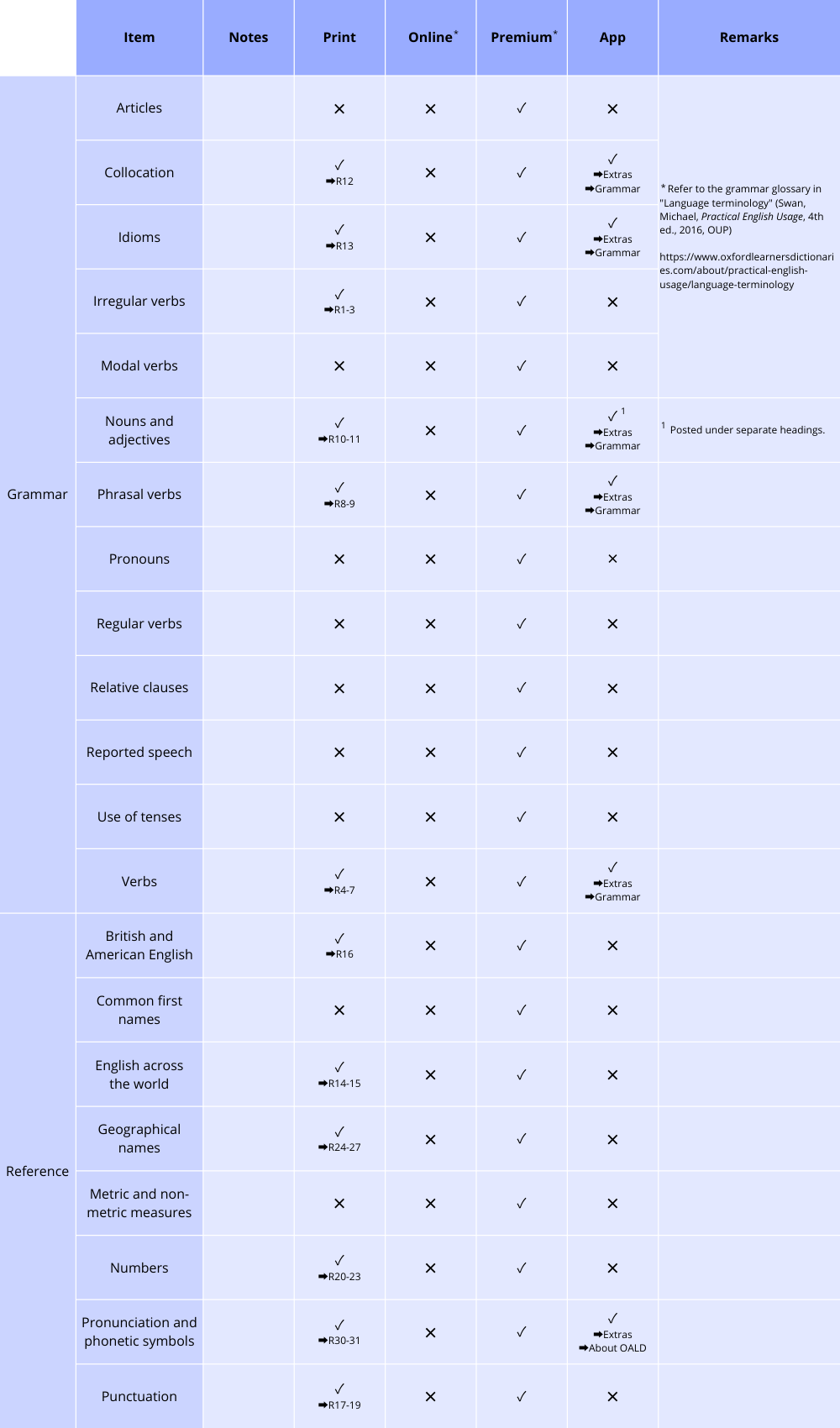
How to use the dictionary
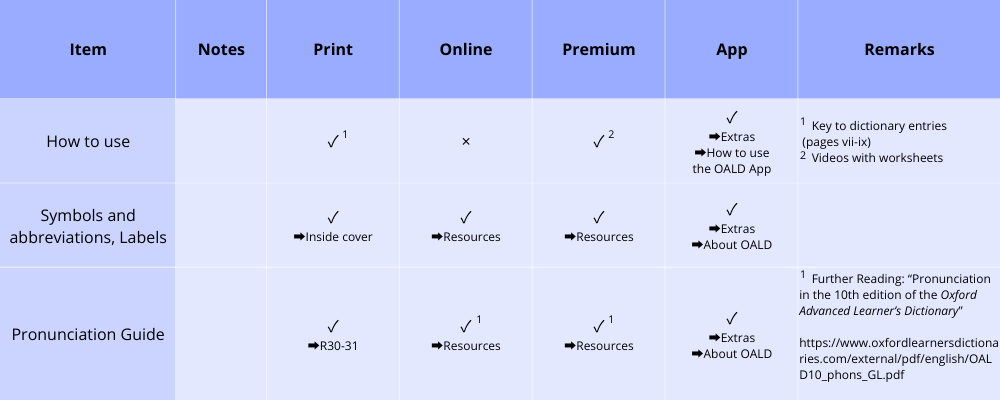
Others
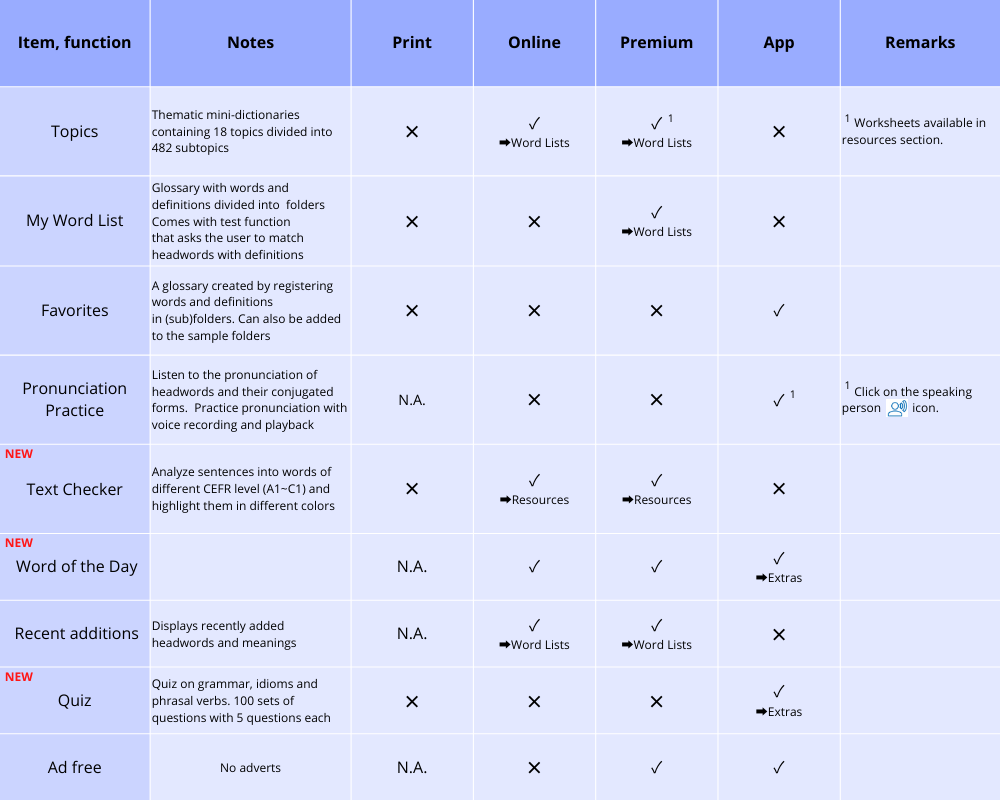
Shigeru Yamada is a Professor at Waseda University, Tokyo. He is on the editorial advisory board of Dictionaries: Journal of the Dictionary Society of North America. He was a Co-Editor-in-Chief of Lexicography: Journal of ASIALEX. His specialization is EFL and bilingual lexicography. His recent publications include “Monolingual Learners’ Dictionaries – Past and Future” (The Bloomsbury Handbook of Lexicography, 2nd ed., Ch. 11, 2022).
Guide to the practical usage of English monolingual learners’ dictionaries: Effective ways of teaching dictionary use in the English class (2014, Oxford University Press)
https://www.oupjapan.co.jp/sites/default/files/contents/catalogue/oald/media/oup_guide_to_dictionary_use_2014_e.pdf

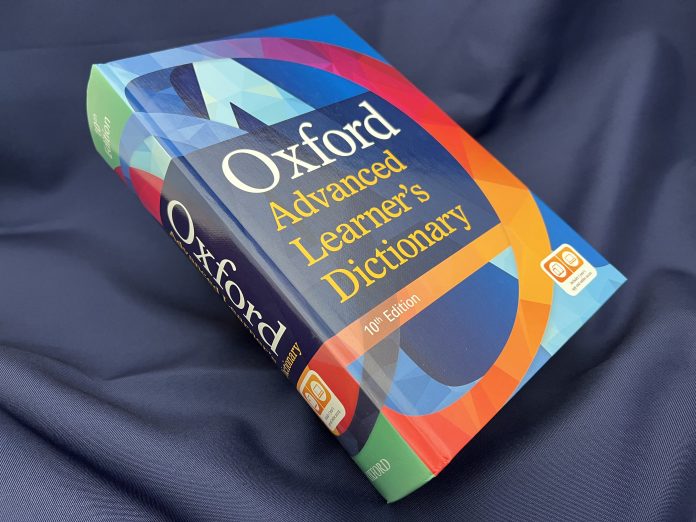

rerally useful for any sort of doubt a non native may have. I suppose it is expensive…
Digitization is very impactful
Even with digitization the Teacher still needs to develop strategies to save time, i.e. make teaching efficient so that students don’t lose interest.